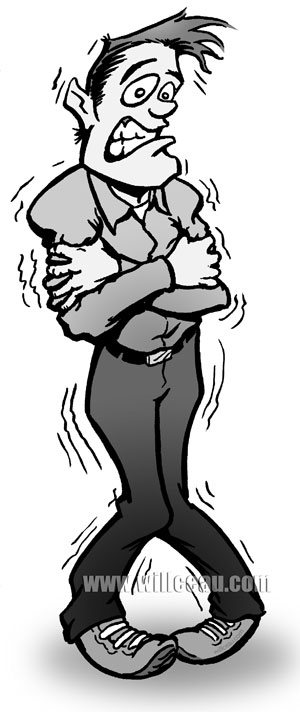I chose the environmental stress of a cold climate. This environmental stress negatively impacts the survival of humans by disturbing homeostasis. When humans experience cold climates, they will have an increased metabolic rate, they will shiver, and they will experience vasoconstriction. If these things don’t help, they might even experience hypothermia or even death.
A short term response that humans have used to adapt to the cold is shivering which can help generate body heat and muscle heat for a short amount of time.
A facultative response that humans have used to adapt to the cold is having involuntary changes in vasoconstriction which narrow blood vessels to reduce blood flow to the skin and then reduces their body’s heat loss.
A developmental response that humans have used to adapt to the cold is having large compact bodies that have more fat insulation around their vital organs.
A cultural response that humans have used to adapt to the cold is using insulating clothing such as heavy jackets and pants to combat the cold climate.
The benefits of studying human variation from this perspective across environmental clines is to see how humans vary in their ability to adapt to cold climates and find out why certain groups of people can adapt better to the cold climates while others cannot. For instance, we can find out why people like the Inuits were able to experience periodic warmth and avoid frostbite in below freezing temperatures, while someone like me would more likely experience frostbite in a short period of time.
Information from explorations like this can be useful to help us because it might give us a better idea of what we need to do if we would like to one day inhabit an area in which the climate is very cold. For instance, people are always looking for new envirnoments in which to build houses and attract new residents, so in being able to tell prospective residents that it's easy to live in cold climates if they just follow these simple steps will help them appeal to those people and maybe help them sell houses faster. One example of how this information can be used in a productive way is by studying vasoconstriction which is a short term response to the cold climate. In studying this, manufacturers that specialize in cold weather clothing can figure out more productive materials that will help reduce heat loss at the body surface like vasoconstriction does.
I would use race to understand the variation of the adaptations I listed in number two by saying that in regards to the cold climate, people that had a darker skin pigment were at a disadvantage for Vitamin D production which helps with bone growth and regulates neuromuscular functions. The study of environmental influences on adaptations is a better way to understand human variation than by the use of race because people of the same race can still vary in their ability to adapt. For instance, even though the Inuits had dark skin pigmentation, they made up for their vitamin D disadvantage by eating lots of fish and mammal blubber that contained vitamin D.






Cristina,
ReplyDeleteGreat Job on the Post. I found it very interesting that the body narrows the blood vessel to minimize the blood flow and reduce the body's heat loss, very cool. I have a question regarding your final statement however, I found that race shouldn't and doesn't play a part in understanding variations of adaptations. It would be easy to receive inaccurate information of such by basing it on one individual race don't you think? Sure there are commonalities, but I don't think i would base a complete theory on these findings, but then again I could be wrong. Anyway, good job again on the great post.
Lynnet Rodriguez
Great work. I like all your visual imagery. I feel like perhaps your choice of font was part of it. That must have taken a very long time it was an impressive post.
ReplyDeleteGreat Job, it very well define and to the point :) I like your image of the little kid bundle up. Poor Fella can't really play lol.
ReplyDeleteBest of luck in your studies and finals.
I never realized that we shiver in order to create warmth and how our blood vessels narrow. Very interesting. It always frustrates me how some people can easily adapt to colder climates while I have a lot of difficulty, but for people who are larger or have more fat, it's easier for them to stay warm, which makes sense. This was an interesting read, and I liked your pictures too!
ReplyDeleteLove the images!
ReplyDeleteGreat discussion. Curious about your comment on race. How specifically would you use race to study Vitamin D absorption? Would it be scientifically useful to do so? Or can you just draw connections to different races AFTER studying them according to clines?